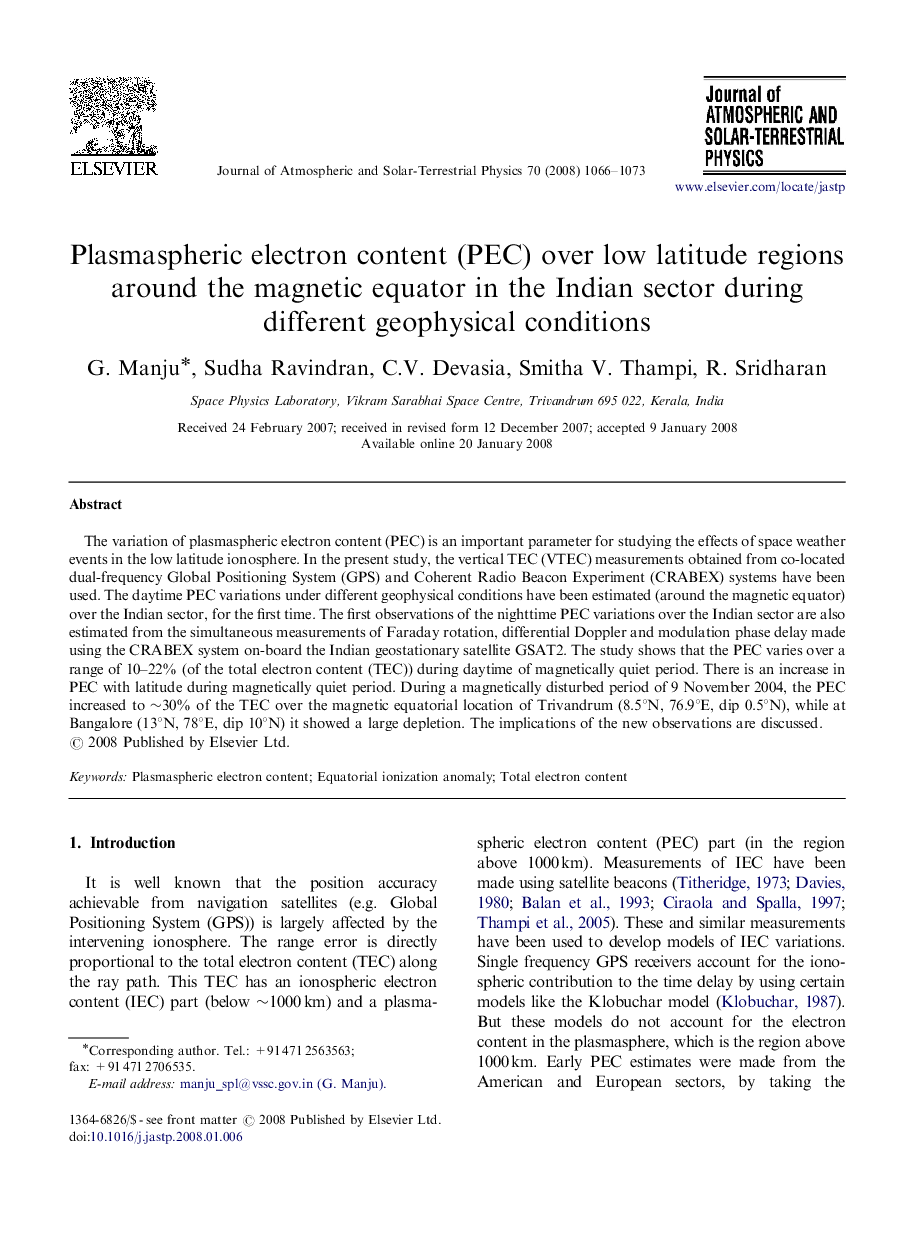| Article ID | Journal | Published Year | Pages | File Type |
|---|---|---|---|---|
| 1778102 | Journal of Atmospheric and Solar-Terrestrial Physics | 2008 | 8 Pages |
The variation of plasmaspheric electron content (PEC) is an important parameter for studying the effects of space weather events in the low latitude ionosphere. In the present study, the vertical TEC (VTEC) measurements obtained from co-located dual-frequency Global Positioning System (GPS) and Coherent Radio Beacon Experiment (CRABEX) systems have been used. The daytime PEC variations under different geophysical conditions have been estimated (around the magnetic equator) over the Indian sector, for the first time. The first observations of the nighttime PEC variations over the Indian sector are also estimated from the simultaneous measurements of Faraday rotation, differential Doppler and modulation phase delay made using the CRABEX system on-board the Indian geostationary satellite GSAT2. The study shows that the PEC varies over a range of 10–22% (of the total electron content (TEC)) during daytime of magnetically quiet period. There is an increase in PEC with latitude during magnetically quiet period. During a magnetically disturbed period of 9 November 2004, the PEC increased to ∼30% of the TEC over the magnetic equatorial location of Trivandrum (8.5°N, 76.9°E, dip 0.5°N), while at Bangalore (13°N, 78°E, dip 10°N) it showed a large depletion. The implications of the new observations are discussed.
